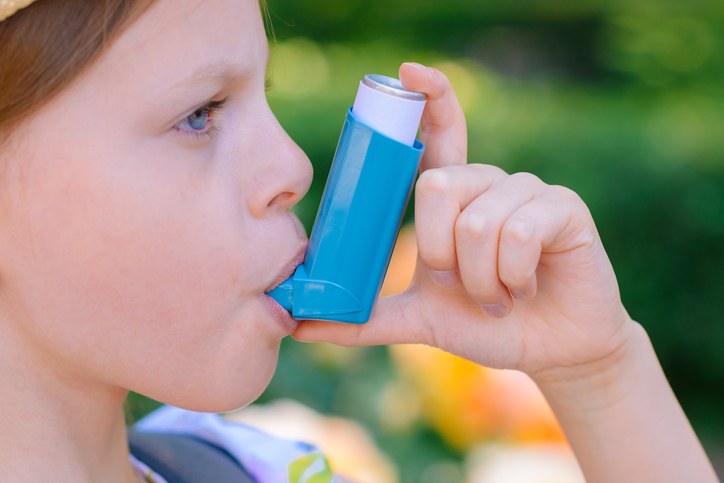There can often be numerous environmental triggers for asthma at school.
Uncontrolled asthma can affect academic performance and keep kids from fully participating in school-related activities. It’s important that parents establish a sound plan each year to ensure their child’s asthma is well managed while at school.
These six tips can help parents in their planning:
Be consistent with control medication
If the child requires daily medication to control his or her asthma, make sure he or she takes it consistently without skipping a day, says Corey Martin, M.D., a pediatric pulmonologist for the Division of Pediatric Pulmonology at The Herman & Walter Samuelson Children’s Hospital at Sinai, a LifeBridge Health center.
“Uncontrolled asthma can lead to asthma attacks and missed school days,” Martin says.
Create an asthma action plan for school
A written asthma action plan can offer school personnel a detailed overview of your child’s asthma and guide them in appropriately managing the child’s condition. The plan should be easy to read and outline things like what medication the child should receive if symptomatic and how often he or she should take it, known triggers, symptoms that may indicate the child’s asthma is worsening, and what should be done in the event of an emergency.
An asthma action plan is typically divided into three zones: Green (indicating the child’s asthma is under control), Yellow (indicating their asthma is getting worse) and Red (indicating an emergency). You can coordinate with your family doctor or your child’s pediatrician to develop an effective plan.
Keep a spare rescue inhaler in the school nurse’s office
Often, children report to the school nurse’s office when they are symptomatic so the nurse can give them a rescue medication. Even if parents think their child is mature enough to carry a rescue inhaler, “it’s still a good idea to keep a backup inhaler at the school in case the inhaler the child normally uses is lost or runs out,” Martin says.
Keep an extra spacer in the nurse’s office, too
A spacer, a plastic tube that makes it easier for medication to reach the lungs, should be used with every medication that comes from an inhaler, except for a handful of controller medications that do not require them. “The physician can tell parents whether their child is using a mediation that requires a spacer,” Martin says. “Spacers are suitable for children of all ages.”
Families should have two spacers: one for use at home and another to keep at school. “Some older children may be mature enough to carry their medication and spacer around with them so that they don’t need to go to the nurse’s office to use their medication,” Martin says. “Most children, though, should have a spacer in the nurse’s office so they can go there for pre-exercise albuterol or if they are symptomatic.”
Make sure your child knows to take pre-exercise medication (if needed) prior to activities
Exercise is a common trigger for asthma. If it’s a trigger for your child’s asthma, “make sure a plan is in place so that he or she can get a couple of puffs of his or her rescue inhaler 10 to 15 minutes before gym class, sports activities, or other forms of exercise,” Martin says.
Renew medication forms for school
Many schools require that an asthma medication administration authorization form be filled out so medication can be provided to the child. Make sure all the necessary authorization documents for your child’s medications are completed. “These forms usually need to be renewed annually,” Martin says.
To learn more about scheduling an appointment and services offered by Samuelson Children’s Hospital’s Division of Pediatric Pulmonology, call 410-601-4096. You can call 410-601-WELL or visit lifebridgehealth.org for more about all other services at LifeBridge Health, including specialty care and community events.



